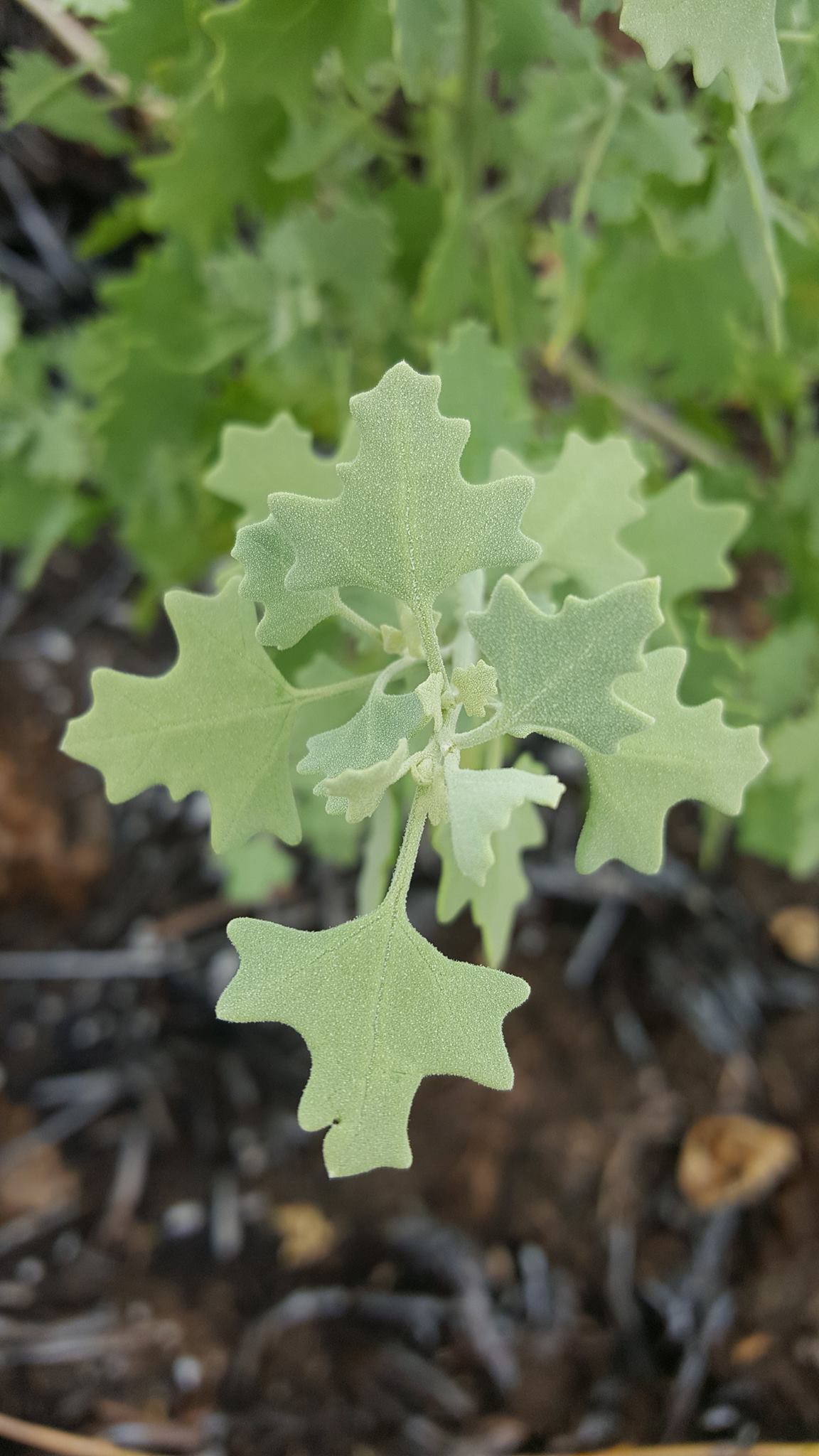‘Āweoweo is one of several native members of the Amaranthaceae or goosefoot, family and can be found on all of the major Hawaiian islands as well as Papa‘āpoho (Lisianski), Kauō (Laysan), Kānemilohaʻi (French Frigate Shoals), Mokumanamana (Necker), and Nihoa. This widespread species exists as a shrub to small tree that can be found from coastal dry forests to subalpine shrublands at over 8,000 ft. elevation. The leaves are typically 3-lobed and are dull greenish-gray, darker on the top than the bottom. When crushed, the leaves can produce varying degrees of fish-like aromatics, hence the shared name with the fish, ‘āweoweo. Flowers and fruit are quite small and are arranged in leafless panicles at the end of branches.
In the landscape, ‘āweoweo can be used as a container, accent, ground cover, or hedge. Trimming back of the inflorescence will promote thicker leaves. Once established, ‘āweoweo does not require watering unless experiencing drought for several months. It can be grown in full sun to partial shade and drought, wind, salt spray, and heat tolerant. New stems and leaves can often produce a red streaking pattern which can add a nice pop of color to the landscape. ‘Āweoweo is a prolific seed producer, so many seedlings may appear underneath, but they are not invasive.
Native water and land birds have been known to use ‘āweoweo for both food and nesting material. Historically, early Hawaiians would use the wood of ‘āweoweo to form makau mano, or bone-pointed shark hooks. The leaves and shoots can also be wrapped in tī, cooked in an īmu, and eaten like spinach.
Resources:
- http://nativeplants.hawaii.edu/plant/view/Chenopodium_oahuense
- https://www.nrcs.usda.gov/Internet/FSE_PLANTMATERIALS/publications/hipmcfs9011.pdf
- Wagner, Warren L., Derral R. Herbst, and S. H. Sohmer. Manual of the Flowering Plants of Hawaii. Honolulu, HI: University of Hawaii Press, 1999
- Lilleeng-Rosenberger, Kerin E. Growing Hawai’i’s native plants: a simple step-by-step approach for every species. Honolulu, Hawai’i: Mutual Pub., 2005.


